
19 Oct Rendering: Texas Range
Sitting down with architect Steve Chambers, AIA, at his office in Dallas is like reconnecting with an old friend. He is warm, charming and inviting — just like his office itself, which feels more like a home than a place of work. It is neatly stacked with an impressive collection of old architecture books and is decorated with a beautiful assortment of Asian and Peruvian ethnographic textiles.
Chambers began his career in commercial architecture, but found himself drawn to projects that were more intimate in scale and which enabled him to tap into the emotional side of design. So he turned to residential architecture 39 years ago. Four years later he founded the Dallas-based firm, Stephen B. Chambers Architects, Inc., which specializes in Regional Modern design, new – historical architecture, preservation and remodeling.
Since then, Chambers, who is also a licensed interior designer, has gained a reputation for high-quality, collaborative and client-centric architecture. From the beginning Chambers has intentionally kept his firm small, handling about five to seven projects per year, so that he can personally work with each client throughout the entire design process.
Sitting down with architect Steve Chambers, AIA, at his office in Dallas is like reconnecting with an old friend. He is warm, charming and inviting — just like his office itself, which feels more like a home than a place of work. It is neatly stacked with an impressive collection of old architecture books and is decorated with a beautiful assortment of Asian and Peruvian ethnographic textiles.
Chambers began his career in commercial architecture, but found himself drawn to projects that were more intimate in scale and which enabled him to tap into the emotional side of design. So he turned to residential architecture 39 years ago. Four years later he founded the Dallas-based firm, Stephen B. Chambers Architects, Inc., which specializes in Regional Modern design, new-historical architecture, preservation and remodeling.
Since then, Chambers, who is also a licensed interior designer, has gained a reputation for high-quality, collaborative and client-centric architecture. From the beginning Chambers has intentionally kept his firm small, handling about five to seven projects per year, so that he can personally work with each client throughout the entire design process.
“He listens and designs the house you want; he doesn’t impose his aesthetics on you,” says Susan Daniel from Dallas. She and her husband, Josiah, own a farm in east Texas. They hired Chambers to help restore an 800-square-foot dogtrot-style log home that Josiah’s great-great-grandfather built back in 1856.
“This was a once-in-a-lifetime project, so it had to be right,” remembers Chambers, who also designed the main house on the property. “We were preserving something of great historical value, not only for this family but also for the public.”
Chambers took great care to preserve the embodied energy of the original home, which the Daniels use as a guest house. The architectural drawings incorporated historic details and utilized materials and lumber from the same time period. All exposed and visible materials are antique, while the faces of the logs on both sides, as well as the dovetail joints, were left exposed throughout the house. The home was also updated in a way typical of the period, with additional lean-to sheds being added on each side to make room for a kitchen and a bathroom.
Ralph and Susan Hawkins’ 6,800-square-foot home in the Bluffview area of Dallas is on the opposite end of the design spectrum, but it is equally indicative of Chambers’ work and is an example of his expertise in Regional Modernism. Ralph Hawkins, FAIA, FACHA, LEED AP, is former CEO and current chairman of the board for the commercial firm, HKS Architects. He came up with the concept and schematic design pack for the home, but knew he wanted to collaborate with a residential architect. So he called Chambers, a former colleague at HKS.
“It’s one of the greatest compliments, to be selected by a fellow architect,” says Chambers, who has had this experience three times in his career.
“I didn’t go through a selection process; I just called Steve,” recalls Hawkins. “Some architects are egotistical, but Steve and I are very respectful of one another.”
The result is a modern masterpiece designed with sustainability in mind, and it is a true reflection of their teamwork. The home features the simplicity of the owners’ Modernist
sensibilities — evident in its use of space, light, massing and proportion — integrated with Chambers’ regionalist convictions. Regional character was achieved through the abstraction of Texas elements, including a massive central wall with stone lintels that penetrate the external walls of the house. Additional whispers of Texas Hill Country homes were also incorporated, including a regional matrix of massive Texas limestone blocks, a standing-seam metal roof, a dry-stack stone wall at the entry and a deep-shaded back porch.
“Two heads are better than one,” Hawkins concludes. “We came out with a better product because of our collaboration. It was a collaboration made in heaven!”
Chambers describes this type of praise as incredibly rewarding. “I love hearing, ‘I can’t believe you got it’ from one of my clients,” remarks Chambers, who says he is happy to have found a profession where he can help people and enjoy himself at the same time. “I’m just upset there are not 100 years left in my career!”
Ralph and Susan Hawkins’ 6,800-square-foot home in the Bluffview area of Dallas is on the opposite end of the design spectrum, but it is equally indicative of Chambers’ work and is an example of his expertise in Regional Modernism.
- The sleeping pen is accessed from the dogtrot of the restored log home. The original plank and batten door leads to the master bath.
- A photograph from the 1930s shows the two-story iteration of the 1856 dogtrot home.
- Steve Chambers, AIA, studied regional design in Santa Fe.
- The new construction in the restored dogtrot log home contrasts with the weathered live oak logs of the original pens.
- The open plan of this sustainable regional modern Texas home allows for a very casual living style, particularly here in the kitchen and living area.
- Large limestone blocks form a wall that separates the more formal living and dining areas from the casual areas of this Texas home. The wall, which cuts through the entire length of the home, is functional and symbolic, evocative of historic Texas stone construction in its mass and detail.
- The orientation on the site offers filtered light through existing trees, while large overhangs protect the home from direct sunlight.
- A deep porch on the south elevation provides additional outdoor living space, protection from the texas sun and “daylighting” through reflected light into the interior of the home.









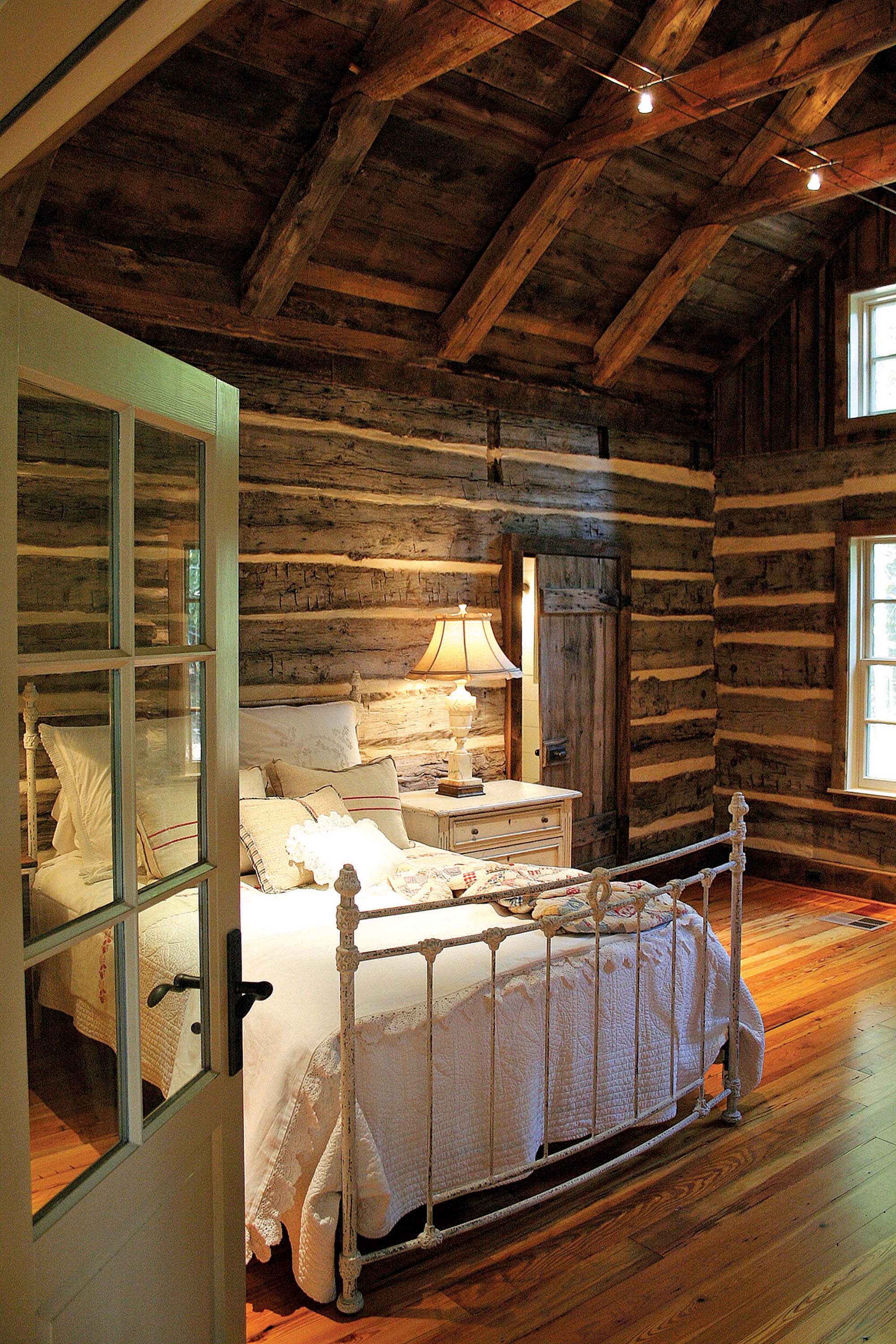
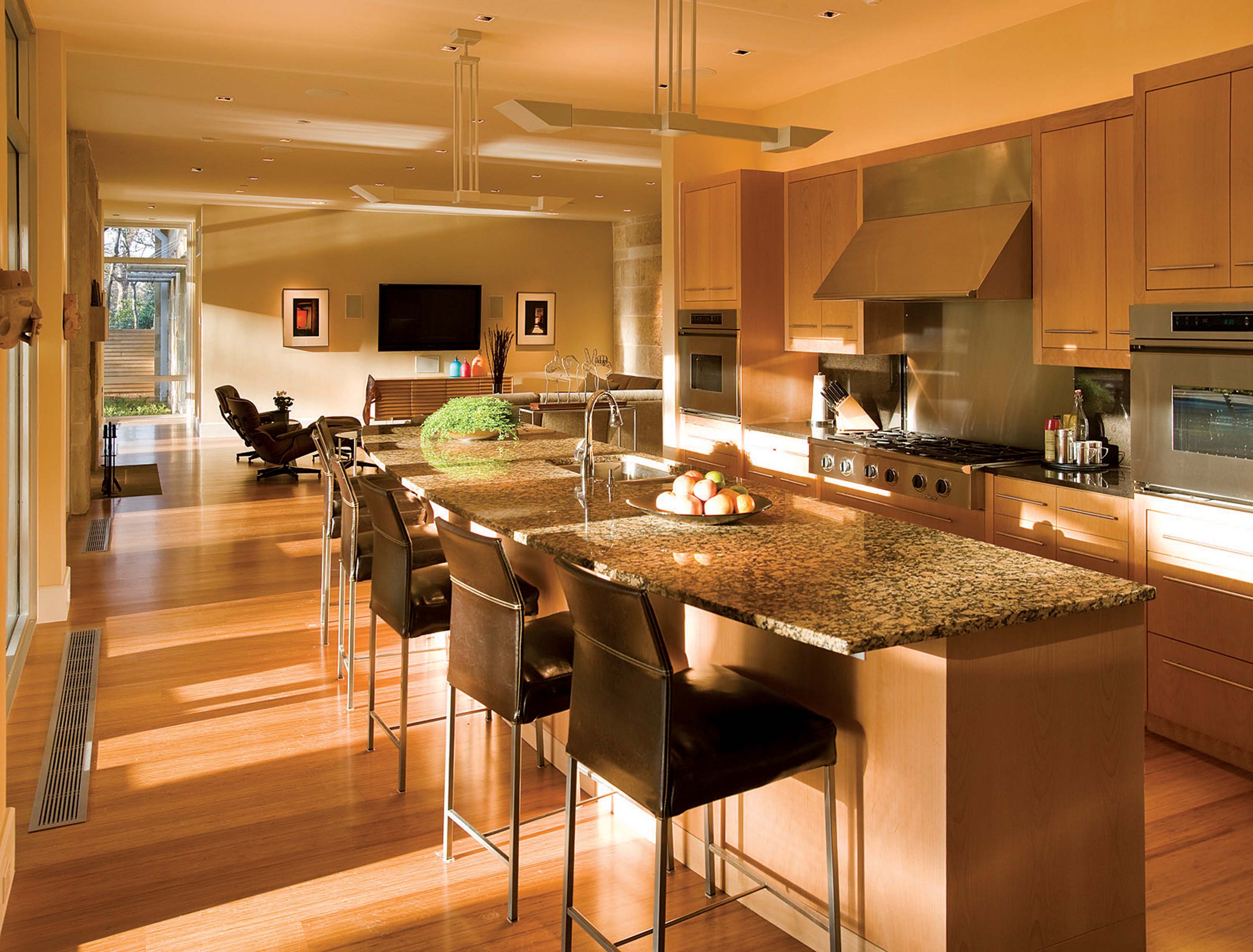
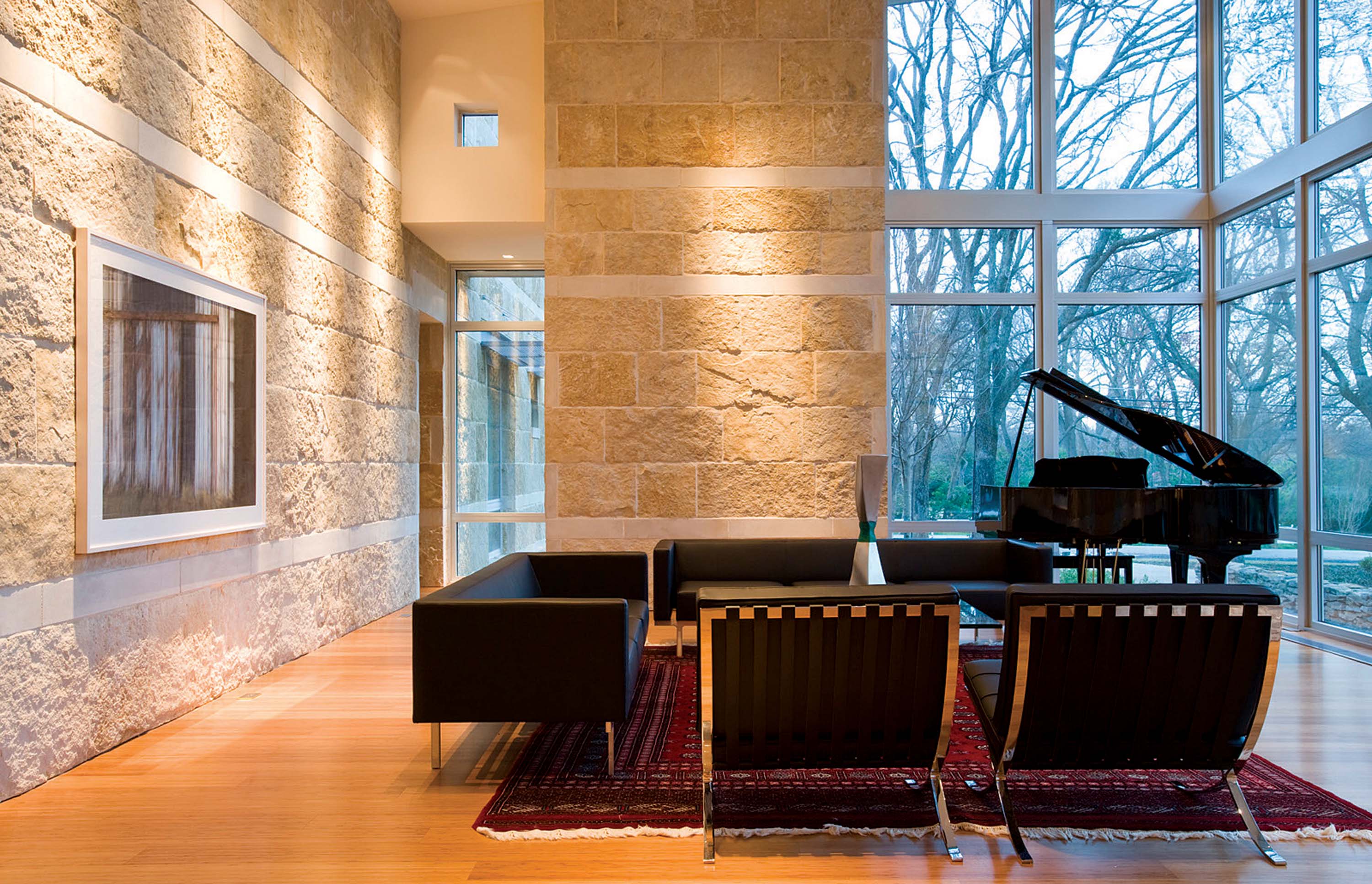
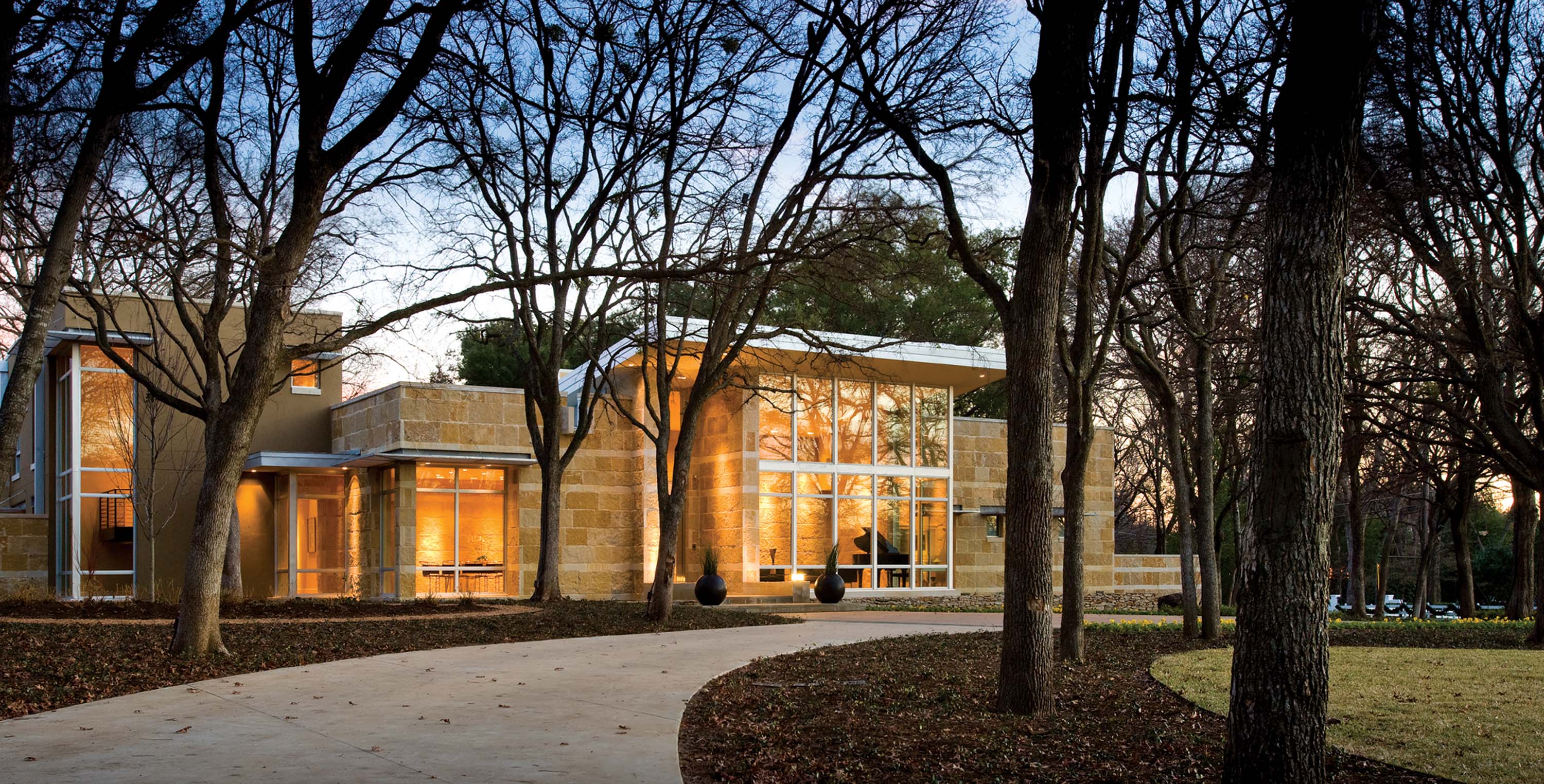
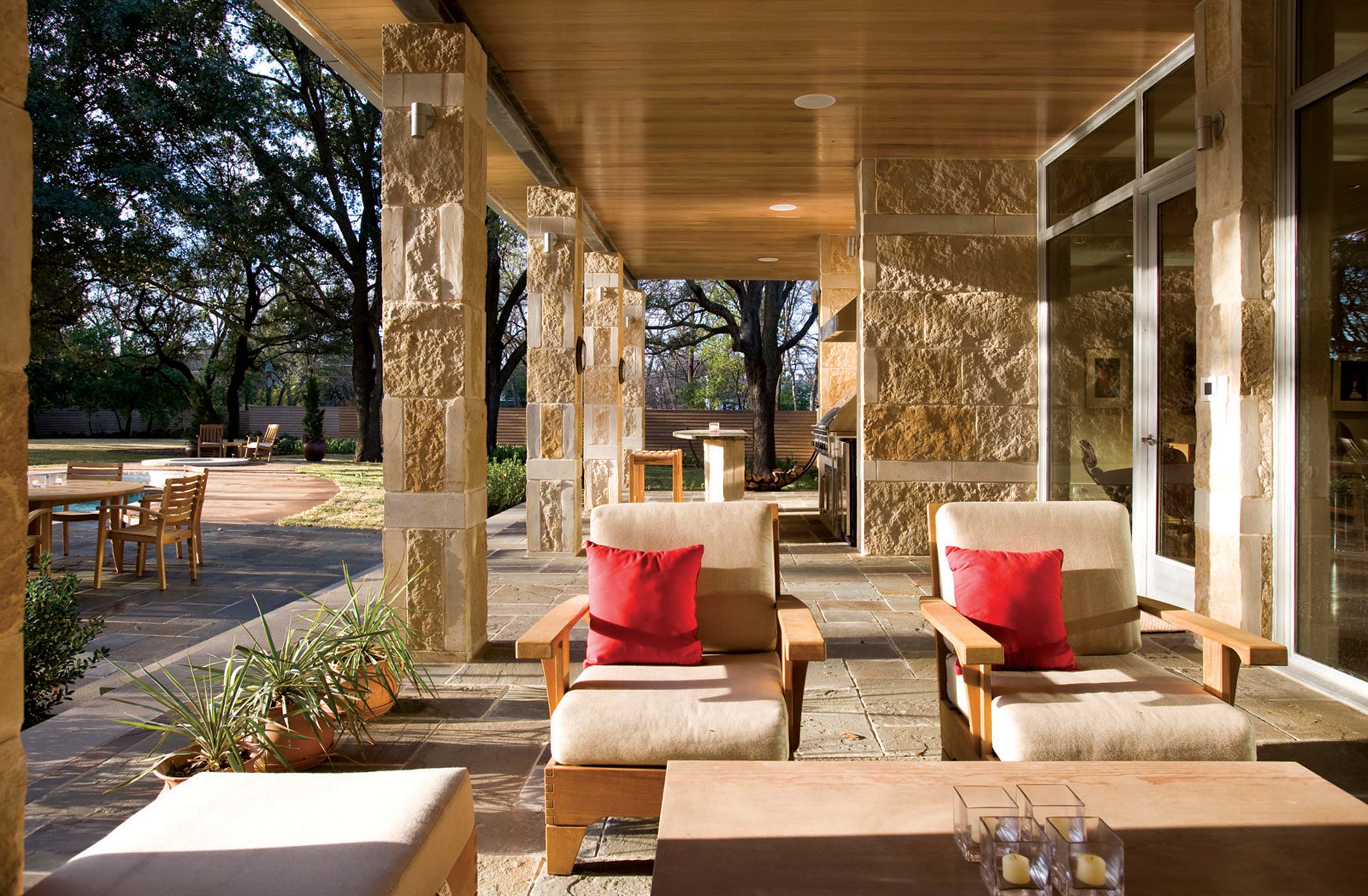
No Comments